Why Christian Dior's Couture is Canon
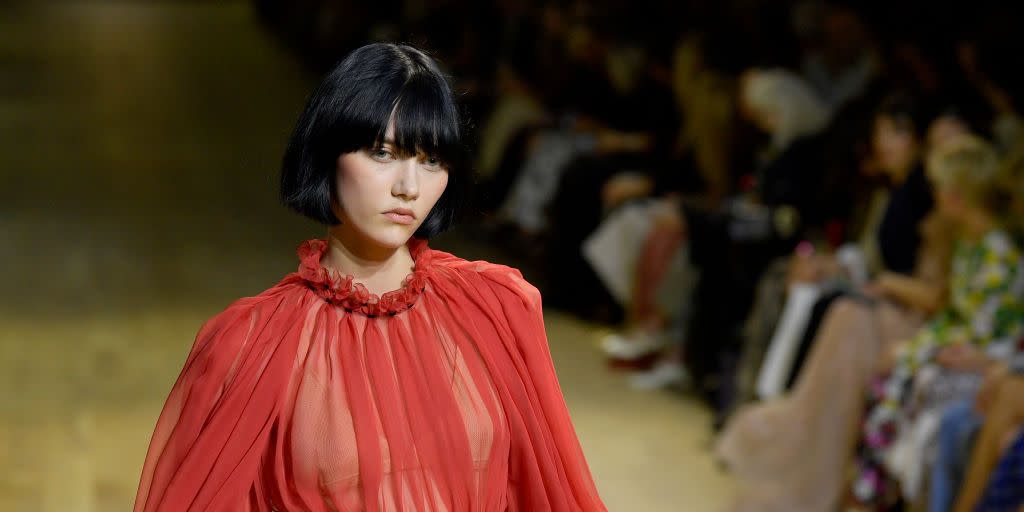
- Oops!Something went wrong.Please try again later.
- Oops!Something went wrong.Please try again later.
Haute couture: the highest form of fashion, its wares designed by the industry’s top creative talents and lovingly crafted with skilled passion by the renowned petites mains. Expectations—those of the clients and the creators themselves—are as high as the prices.
In an era in which fashion relentlessly waves the banner of inclusivity, some critics consider these glorious garments an elitist relic, and they have a point. Despite well-meaning efforts to broaden its audience, at its most basic level couture remains the epitome of exclusivity, within reach only of those of extraordinary wealth. Skeptics might ask, a six-figure dress—seriously?
Seriously indeed. Broadly speaking, couture is fashion’s laboratory, the hub of wondrous flights of fancy and creative experiments. While ready-to-wear offers great range and fabulous clothes, a couture dress is by definition a unique creation. Sometimes the couturier may allow design modifications at a client’s request; always the piece is sized, cut, and built specifically for that individual.
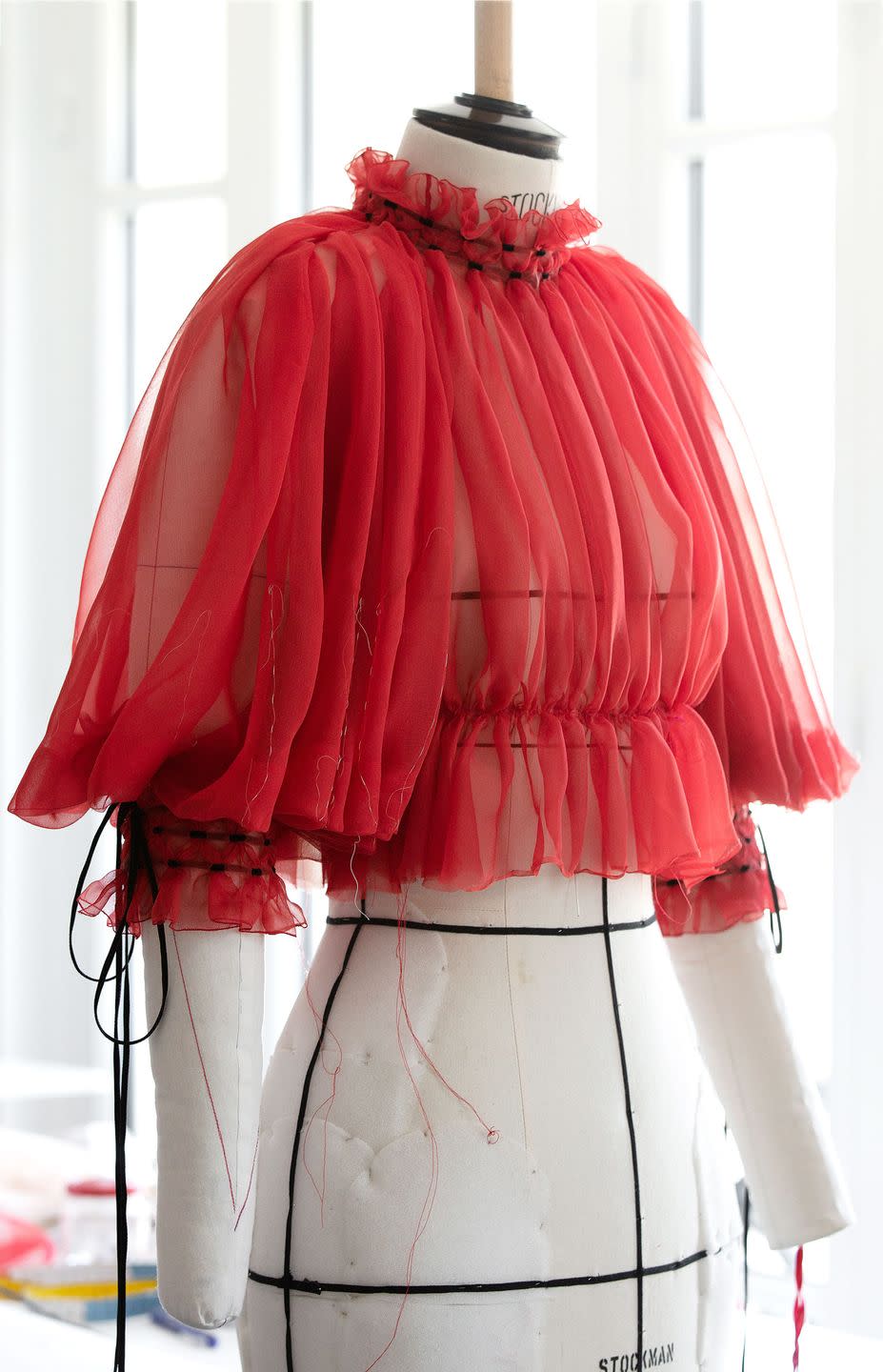
And while over the years some houses have experimented with some machine-made elements, couture remains a mostly handmade process. Today this resonates more powerfully than ever, as each piece is constructed to last not for a season, or even 10, but long into the unknowable future. It is the authentic antithesis of fast fashion, a waste-free investment intended to be loved, treasured, and worn for generations.
Maria Grazia Chiuri, creative director of women’s at Christian Dior, speaks eloquently of couture’s inherent power. “We are not to forget that couture was born in France,” a point she stresses even though she cut her haute molars alongside fellow Italian Pierpaolo Piccioli at the Rome-based Valentino. “And immediately it became a part of their nationality, their culture.”
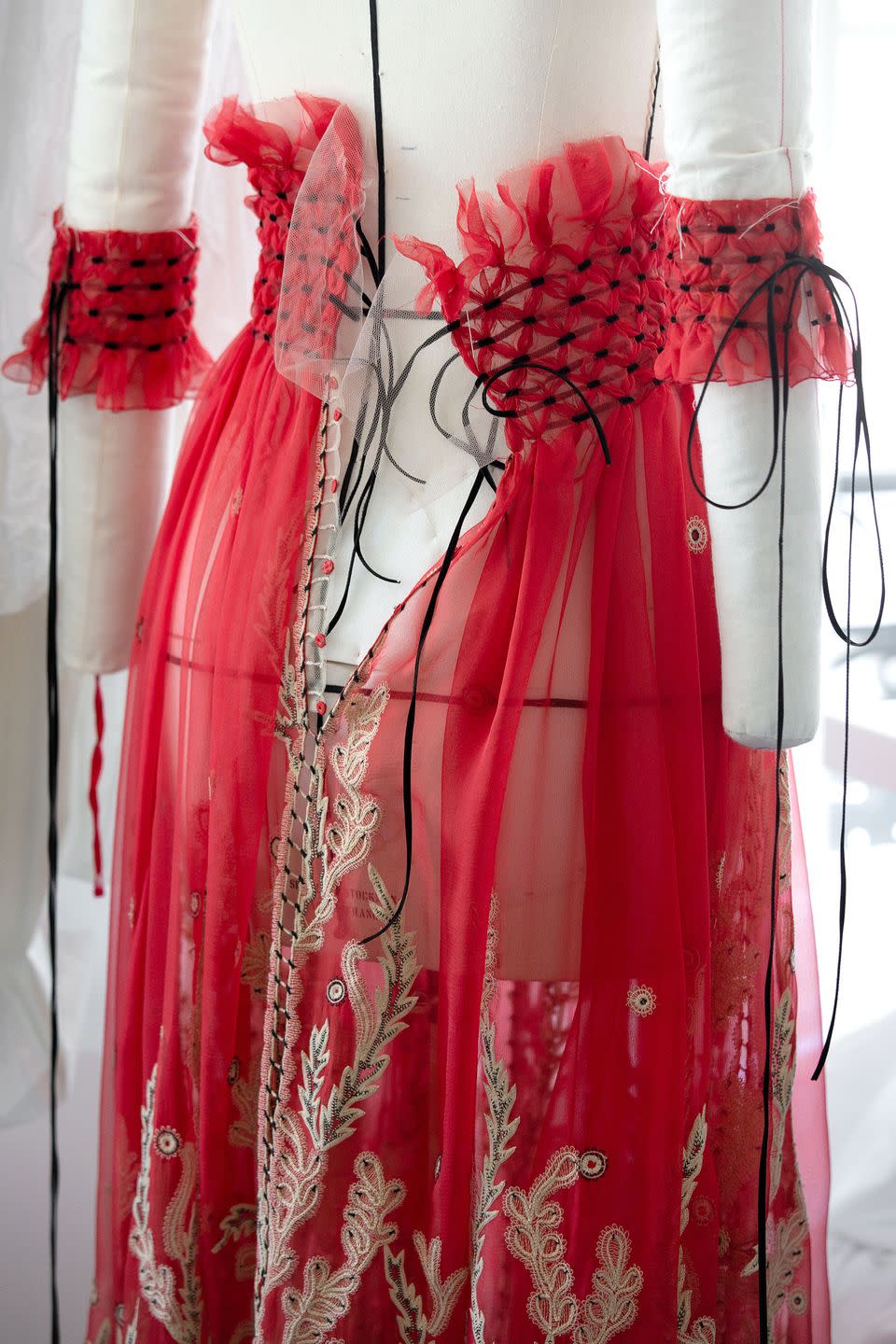
After all, it was 75 years ago, following the devastation of World War II, that Dior debuted his haute couture with a stunning proposition the renowned fashion editor Carmel Snow immediately dubbed the New Look. The nipped-waist, full-skirted silhouette felt radical in its return to a sternly constructed line and in its wanton opulence after years of mandated austerity. Dior is credited with helping to move the French nation’s psyche out of the postwar doldrums into an era of all-is-possible optimism. In doing so, he codified fashion as an essential barometer of the society’s mindset.
The impact of that moment has not diminished with time. Couture’s relevance now is rooted in the intimacy of craft. It depends on sui generis artisans for its existence, and they, in turn, depend upon couture for their livelihoods. Chiuri considers this a huge responsibility, which is why she was fiercely committed to safely producing and showing (virtually) couture during the lockdowns that followed the onset of the Covid pandemic.
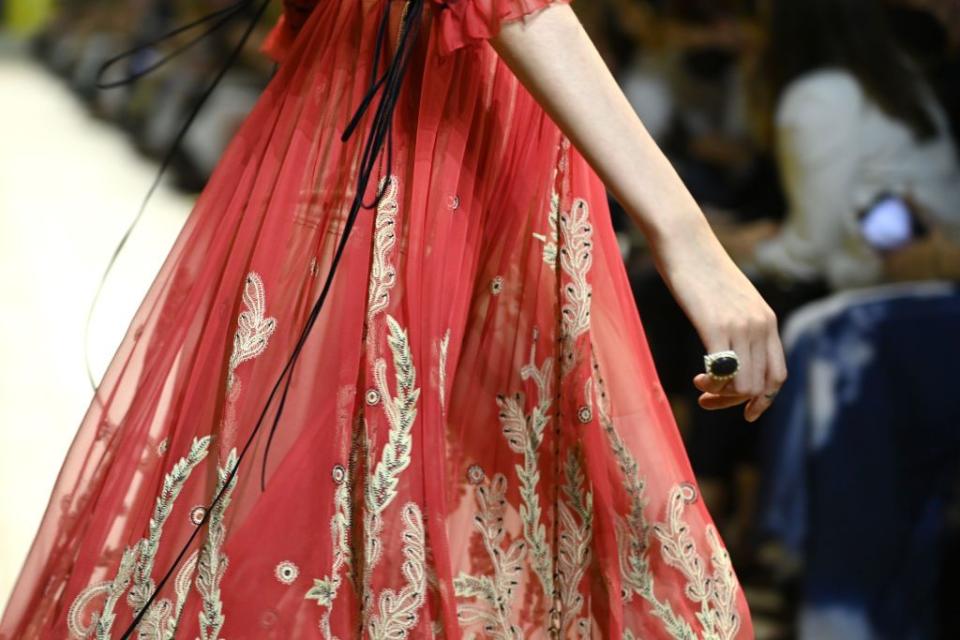
“When you have people who work by hand, and in one moment all of the systems stop, they have no other option than to leave and find another job,” she says. “If you’ve lost this kind of expertise, to recreate it later, at this level, is impossible. You risk lost culture, lost tradition. This expertise is very specific.”
While most of this work continues to be done in France, Chiuri has become increasingly interested in exalting the virtuosity of artists and artisans from all around the world, particularly for her sets. Most recently, for the couture collection she showed in July, she engaged the artist Olesia Trofymenko, whose work she discovered at an exhibit of Ukrainian artists at the MAXXI Museum in Rome as the Russian invasion began. Chiuri was struck by Trofymenko’s powerful combination of painting and embroidery, and she commissioned her to conceive a new series. The embroideries were then produced by the Chanakya School of Craft in Mumbai, which Chiuri has long supported.
Instead of the razzle-dazzle so often associated with couture, the fluid gentleness of the lineup, with its lavish yet calm laces; intricate patterns in soft, natural hues, often tone-on-tone; and numerous references to the Tree of Life (which, Chiuri notes, registers globally) played as an intentional antidote to the fraught geopolitical moment.
“I believe that for a long time fashion was a territory only for fun, only to enjoy,” Chiuri tells me. “We didn’t see all the different aspects that touch fashion.”
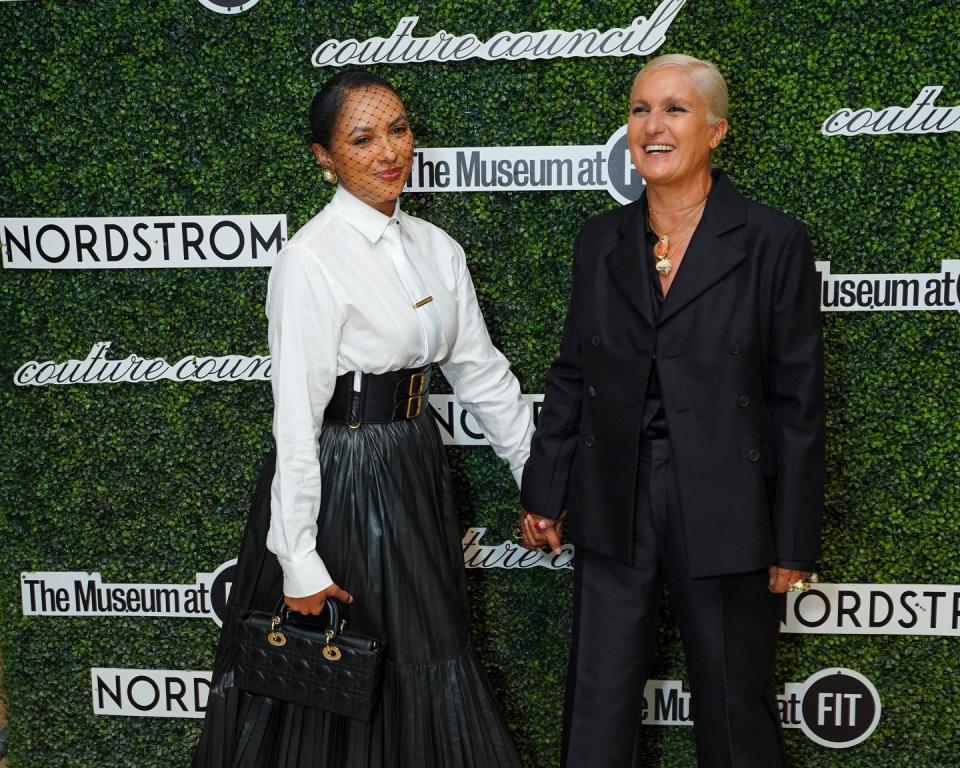
Which is not to say that Chiuri downplays the enjoyment factor at a time when there is so little big-picture joy. If a new frock can bring a smile, however fleeting, why not? That sensation is surely heightened for couture clients, for whom the process is as important as the final product. Dior’s customers often begin in pursuit of an event dress and end up with wardrobe staples as well.
“We help them be organized for their lives,” Chiuri says. “They really appreciate it. They know that there is someone to take care of you, that can realize something specific for you.”
At Dior that something specific is not limited to Chiuri’s work. She shares the remarkable (at least to this writer) detail that a client can order a look from one of the maison’s previous couturiers—from her immediate predecessor, Raf Simons, right back to the house founder. The only caveat: The look will be redone exactly, no changes allowed, to preserve its integrity.
Realizing an archival piece can take longer than a current one, but given Dior’s creative and financial resources, nothing is beyond possibility—even a reissue of a fabric from long ago. In such cases a look can take as much as six months to complete. But whatever the challenges, the ateliers will find a way to make it work, because, Chiuri says, “this is what it means to be couture.”
This story appears in the December 2022/January 2023 issue of Town & Country. SUBSCRIBE NOW
You Might Also Like

